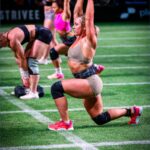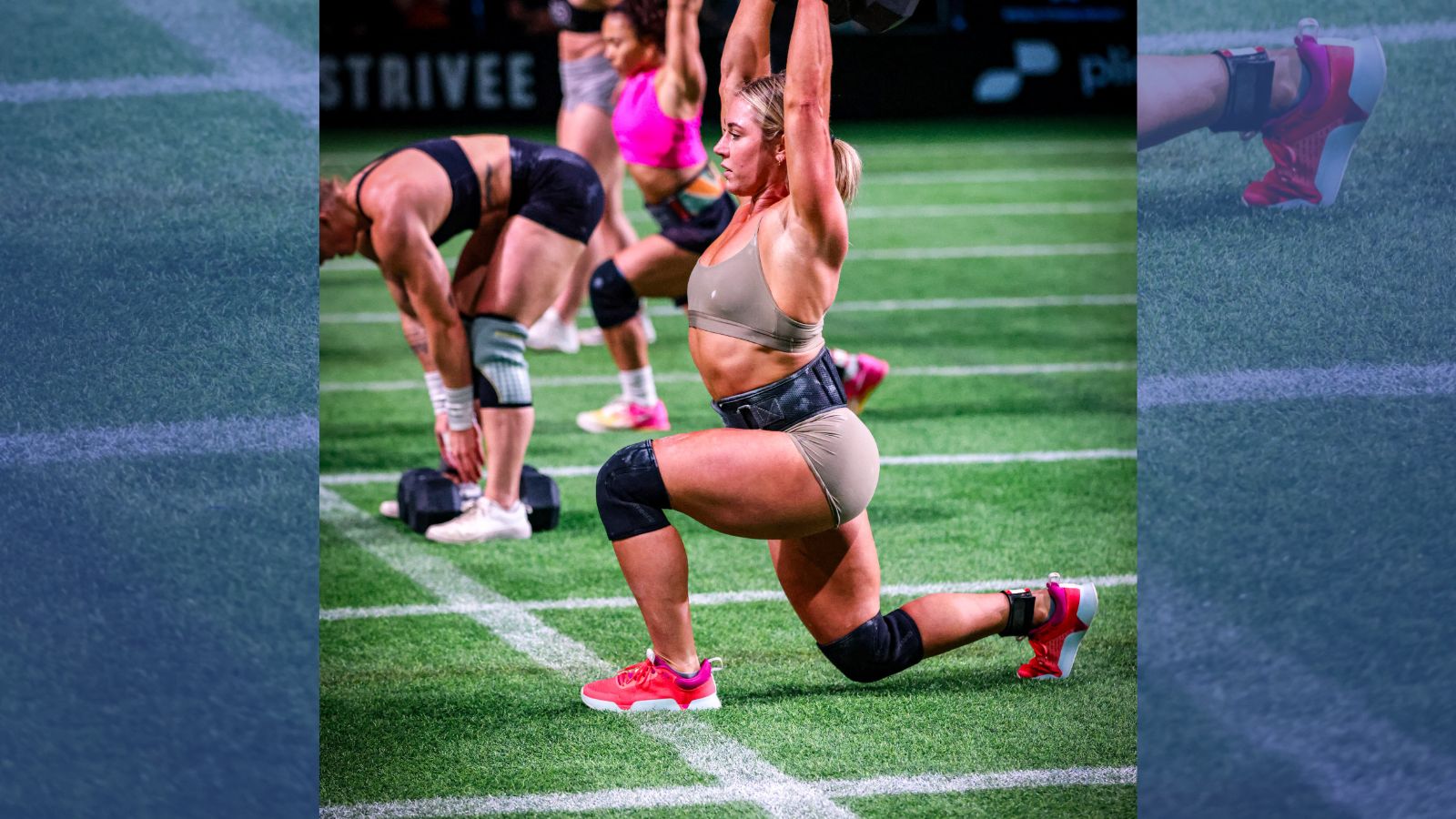If you’re 40 or over, one of the best things you can do to improve your health, body composition, and ‘healthspan’ is to lift weight.
Science shows the benefits of weight training as you get older are truly astounding – especially if you want to slow down the ageing process and stay feeling younger and vibrant through your 40s, 50s, 60s, and beyond.
Strength training helps preserve muscle, protect joints and offset many of the physical declines associated with ageing [1].
It improves blood sugar control, metabolic health and mobility too, while reducing the risk of injury, illness and frailty as you age [2].
But to get results and avoid setbacks, you need to train smart.
The 10 rules you’re about to read are the foundations we use with thousands of men and women over the age of 40 who come to train with us at Ultimate Performance (you’ll see some of the results they achieve too).
From complete beginners to experience lifters, these rules help them safely and effectively build strength, get leaner, and transform their physical and metabolic health.
Table of Contents
ToggleWhy lifting weights is essential after 40
Muscle loss begins earlier than most people realise. From your mid-30s onwards, strength and lean mass start to decline due to age-related changes in hormones, activity levels and recovery capacity [3]. Without regular resistance training, this leads to reduced mobility, slower metabolism and a higher risk of injury, fat gain and chronic disease.
But this decline isn’t inevitable – and it’s not irreversible. Lifting weights can restore lost muscle, improve joint stability, strengthen bones and offset many of the hormonal changes linked to ageing [4]. For women, it can help reduce symptoms of menopause and preserve bone density [5]. For men, it helps counteract the natural drop in testosterone and maintain metabolic health [6].
Most importantly, it improves quality of life – from everyday movement to confidence, energy and long-term independence. Strength training is not just for younger bodies. It’s the single most powerful tool to improve health, physique and performance in your 40s and beyond.
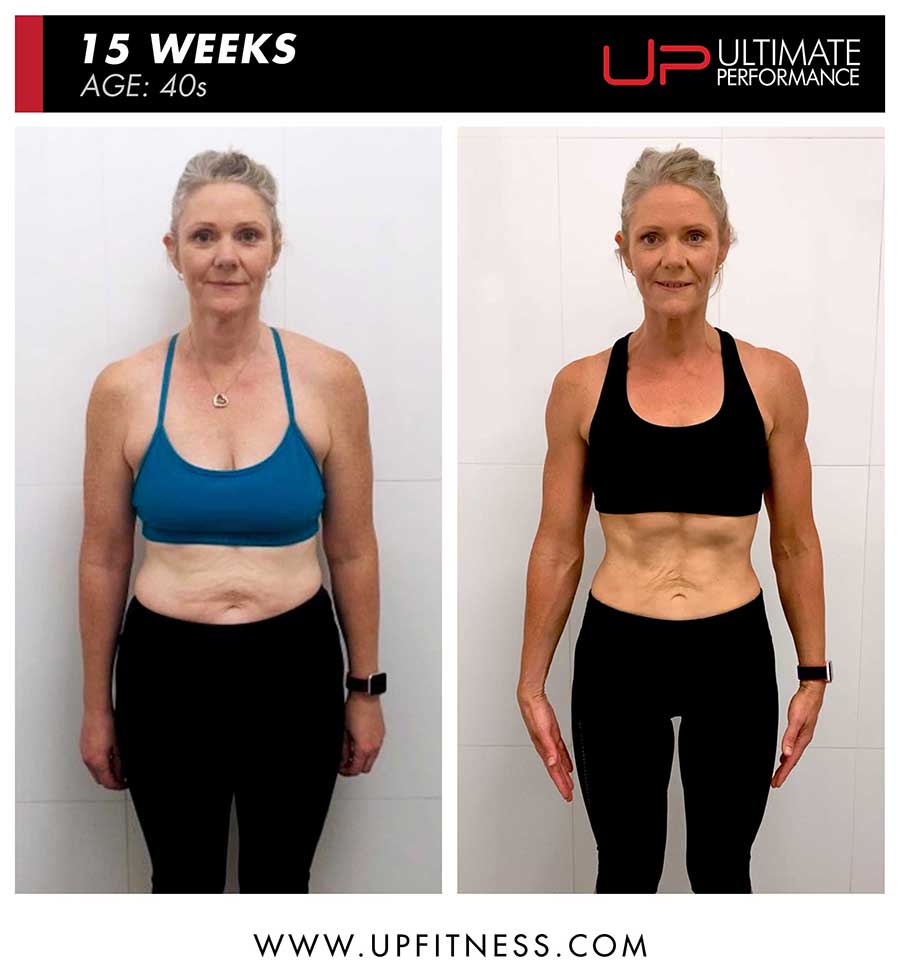
Muscle loss starts earlier than most people think — but lifting weights can reverse it. Read how 46-year-old Leanne achieved this transformation in 15 weeks.
Rule 1: Stay injury-free to keep progressing
In your 20s, it’s easier to get away with mistakes – poor form, rushed warm-ups, training through pain. In your 40s, that margin shrinks. Joint wear and tear, past injuries and slower recovery mean you can’t afford to train recklessly. One small issue can derail weeks of progress.
Avoiding injury doesn’t mean backing off. It means being precise. That starts with proper warm-ups, joint mobilisation, controlled movement and technical execution. Poor form under load is one of the fastest ways to break down. Correct posture, bracing and movement mechanics matter more than ever – especially under fatigue.
Volume and frequency become more important than intensity alone. Older clients respond best to consistent, repeatable training sessions that minimise niggles and allow uninterrupted progression over time. We often say: “Stimulate, don’t annihilate.” Hard training is still the goal – but it should never come at the expense of movement quality or recovery.
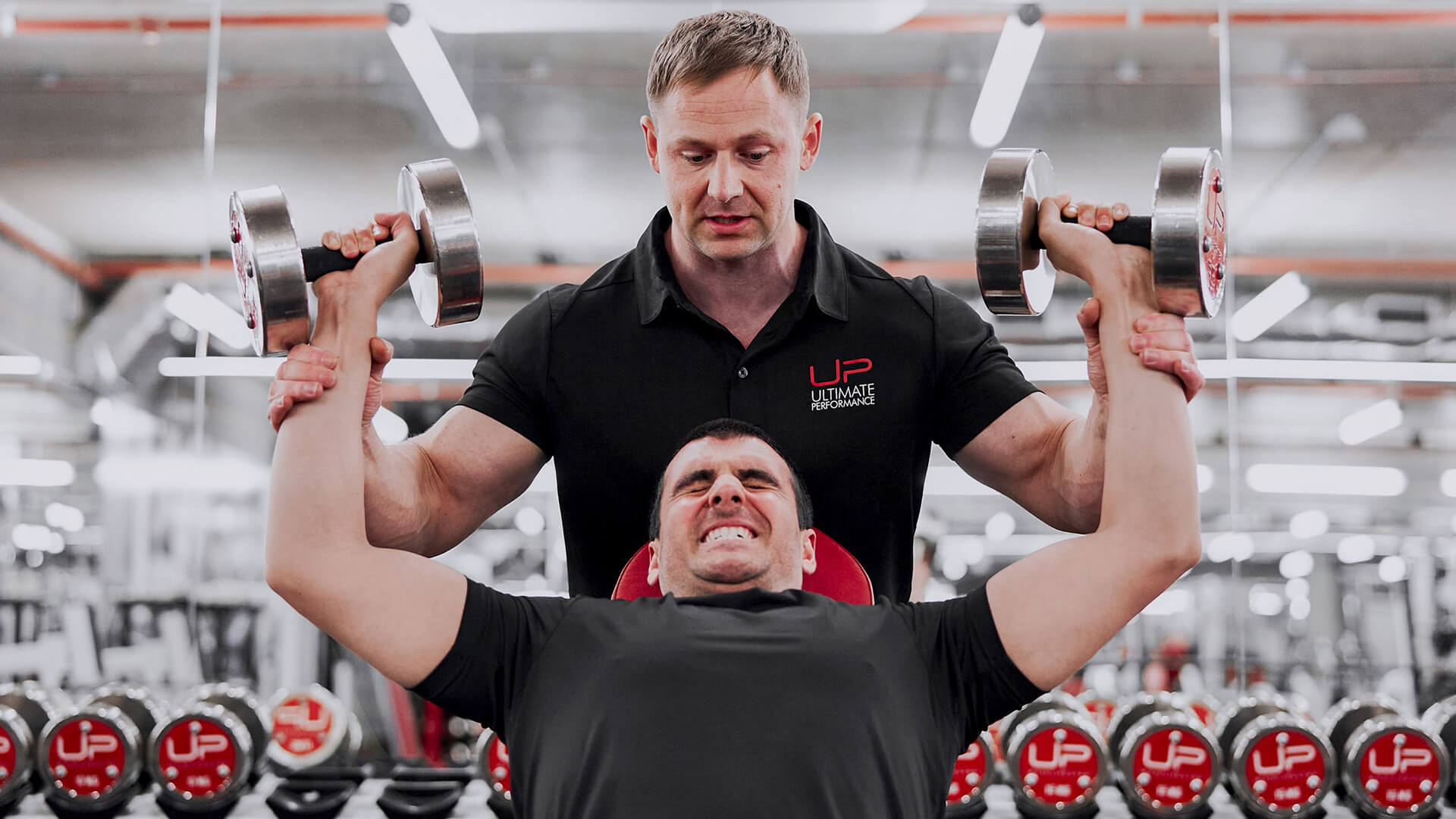
Good technique isn’t optional after 40 – it’s your insurance policy against injury
Rule 2: Use exercise variety wisely
Repeating the same lifts under heavy load, week after week, can lead to joint stress – especially in the shoulders, elbows, knees and lower back. This isn’t about avoiding hard work. It’s about managing wear and optimising longevity. Introducing structured variation helps reduce the risk of overuse injuries while keeping training effective.
That means rotating through or progressing exercises within a movement pattern every few training blocks – for example, alternating between back squats, front squats and split squats – or switching grip position, tempo or equipment. Machines, cables and dumbbells all offer different resistance profiles that challenge muscles while being more joint-friendly than always using barbells.
Even changing the order of exercises can help – if done intelligently. Compound lifts like squats, presses and deadlifts are typically placed early in a session when you’re fresh, to maximise output and safety. But for some clients over 40, moving these lifts later in the workout with lighter loads can allow for a similar training effect. This reduces joint stress while still delivering results. It’s a strategy best suited to those with solid technique and experience, but it can be a powerful tool for long-term progress.

Variation in important in your program as you age.
Rule 3: Spend more time in accumulation phases
Training over 40 requires smarter programming. You can still train hard – but not every session should chase maximal intensity. As recovery capacity declines with age, the balance between stimulus and fatigue becomes more important. This is where periodisation plays a critical role.
Periodisation means structuring your training into phases that emphasise different outcomes – typically alternating between accumulation (volume-driven training focused on muscle gain) and intensification (lower-volume, heavier-load training focused on maximal strength). For clients over 40, longer accumulation phases are usually more productive and sustainable.
A typical ratio might be two or three blocks of accumulation for every block of intensification. That means spending more time in moderate rep ranges (8–12 reps) with controlled tempos and moderate rest, and less time chasing one-rep maxes or very low reps. Volume here refers to the total work done – more sets, more reps, and more time under tension across a session. It’s a more joint-friendly approach that builds muscle, reinforces good movement, and keeps progress steady without grinding the body down.
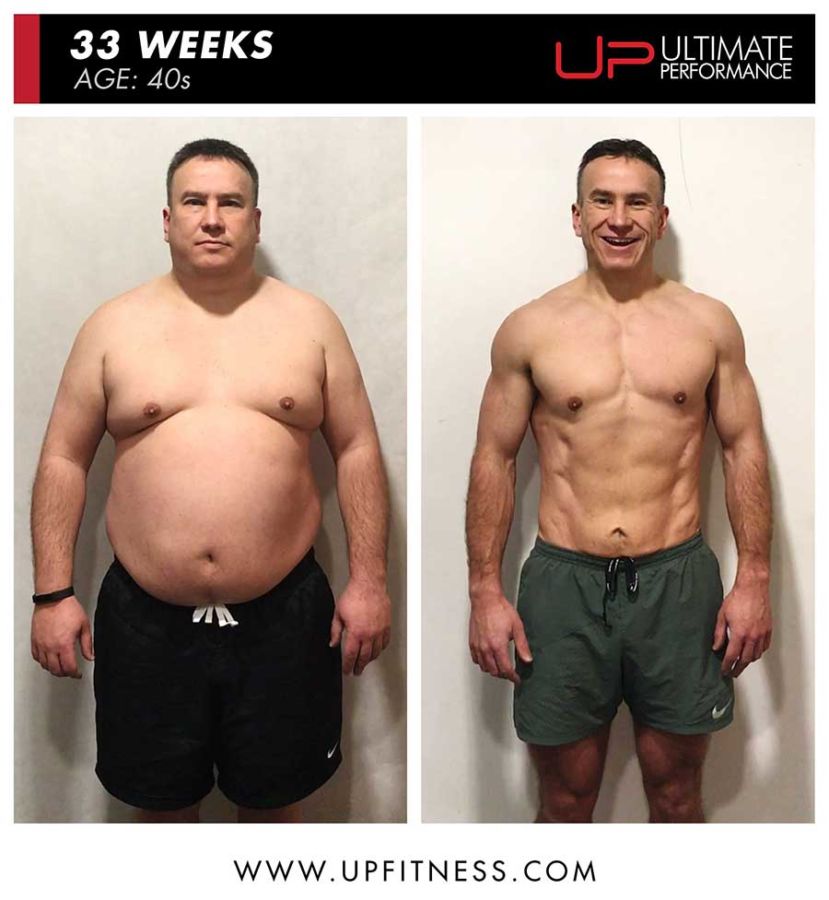
A good personal trainer can create a proper periodised program that’s suited to your ability and lifestage. Read how Mike achieved this 40kg transformation in his 40s.
Rule 4: Increase time under tension
As you get older, the goal of training is not just lifting heavier – it’s creating more muscular tension with less joint strain. One of the most effective ways to do that is by increasing time under tension: slowing down your reps, adding pauses, and using controlled movement through the full range.
This approach improves motor control, strengthens connective tissue and makes lighter weights feel significantly harder – which is exactly what you want when managing recovery and minimising injury risk. Eccentric tempo work, isometric holds and high-rep sets taken close to failure all create strong muscle-building signals without relying on heavy loads.
This is particularly valuable for beginners or those returning to training after a long break. Even low loads – such as resistance bands, bodyweight movements or light dumbbells – can generate a meaningful anabolic response when used with sufficient effort and control. That makes time under tension not just a joint-friendly training method, but a powerful entry point for those starting resistance exercise later in life.

Time under tension can be a secret weapon to help you keep progressing.
Rule 5: Reduce the frequency of spinal loading
Heavy barbell lifts like squats and deadlifts are excellent tools – but they’re also demanding, especially on the spine and supporting structures. As you get older, the tolerance for repeated high-load axial stress often decreases. Grouping these movements too closely together, or performing them too frequently, can lead to lower back fatigue, stiffness or injury.
One simple adjustment is to reduce the number of sessions that include direct spinal loading each week. For example, if you train legs twice in a five-day cycle, only one of those sessions might include a barbell squat or deadlift variation. The other could focus on unilateral work, machines or bodyweight exercises that minimise spinal compression while still challenging the lower body.
This doesn’t mean avoiding squats or deadlifts altogether – it means using them strategically. For some beginners, they may not be necessary at all in their traditional form. Starting with step-ups, hip thrusts, sled pushes or leg presses can build strength with far less risk. The goal is to train hard and recover well – not just lift heavy for the sake of it.
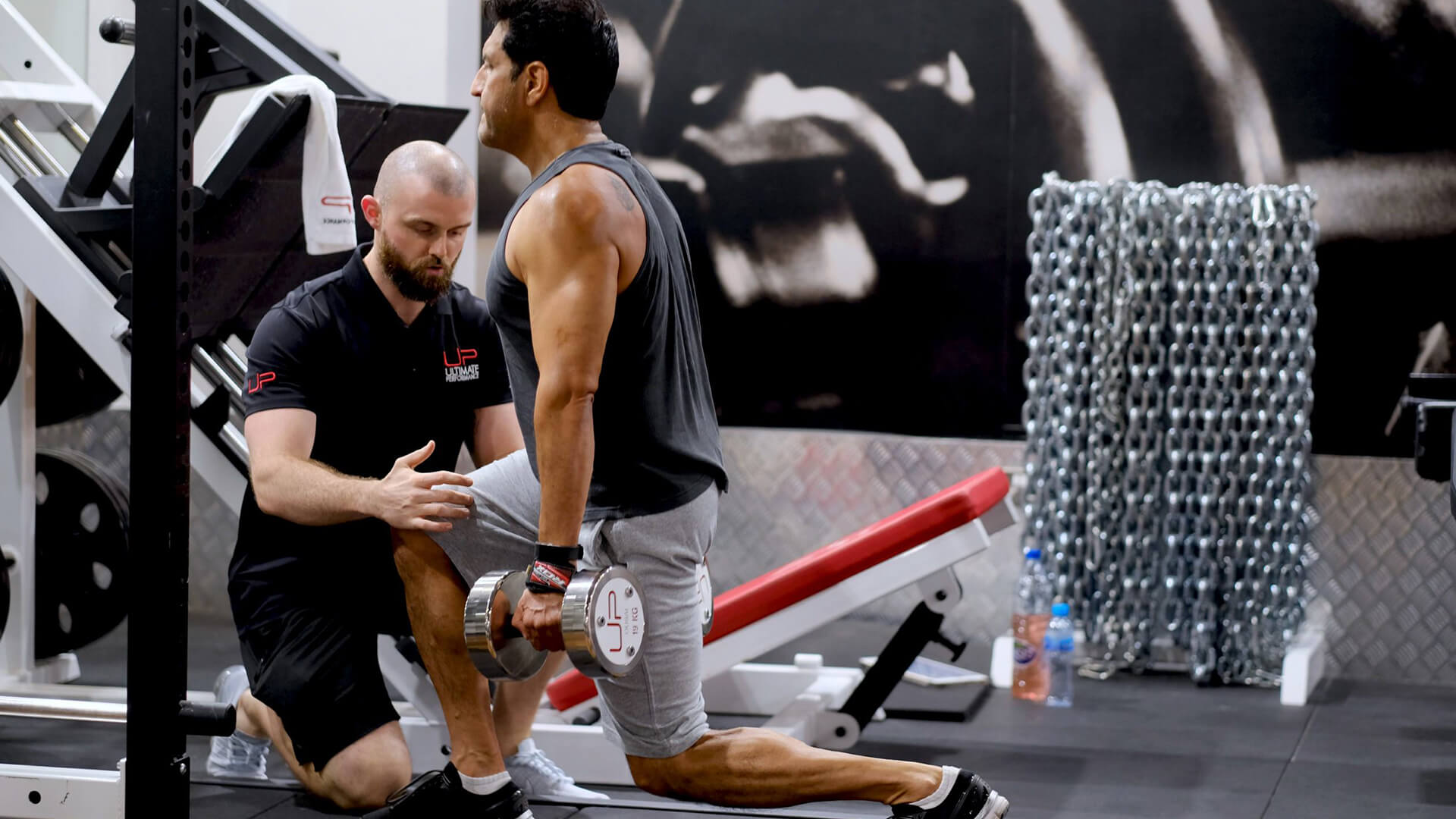
Exercises that reduce direct load on your spine can be a good tool in your arsenal to prevent stiffness or injury.
Rule 6: Build joint stability as a foundation
Joint stability becomes more important with age. It’s common to see clients in their 40s and 50s who haven’t trained consistently arrive with weak stabilisers, asymmetries or poor control through key movement patterns. Before pushing load, those weaknesses need to be addressed – otherwise injury risk increases with every rep.
Improving stability doesn’t require gimmicks or balance tricks. It means training unilaterally, controlling tempo, using isometric holds, and ensuring joints are properly aligned and braced during every lift. Exercises like split squats, single-arm presses and tempo rows all challenge balance and control in ways that build joint integrity over time.
This type of work isn’t just for beginners. Even advanced clients benefit from revisiting fundamental stability drills – especially after injury, long breaks from training or periods of high stress. Prioritising control and joint positioning sets the stage for stronger, safer training at every level.
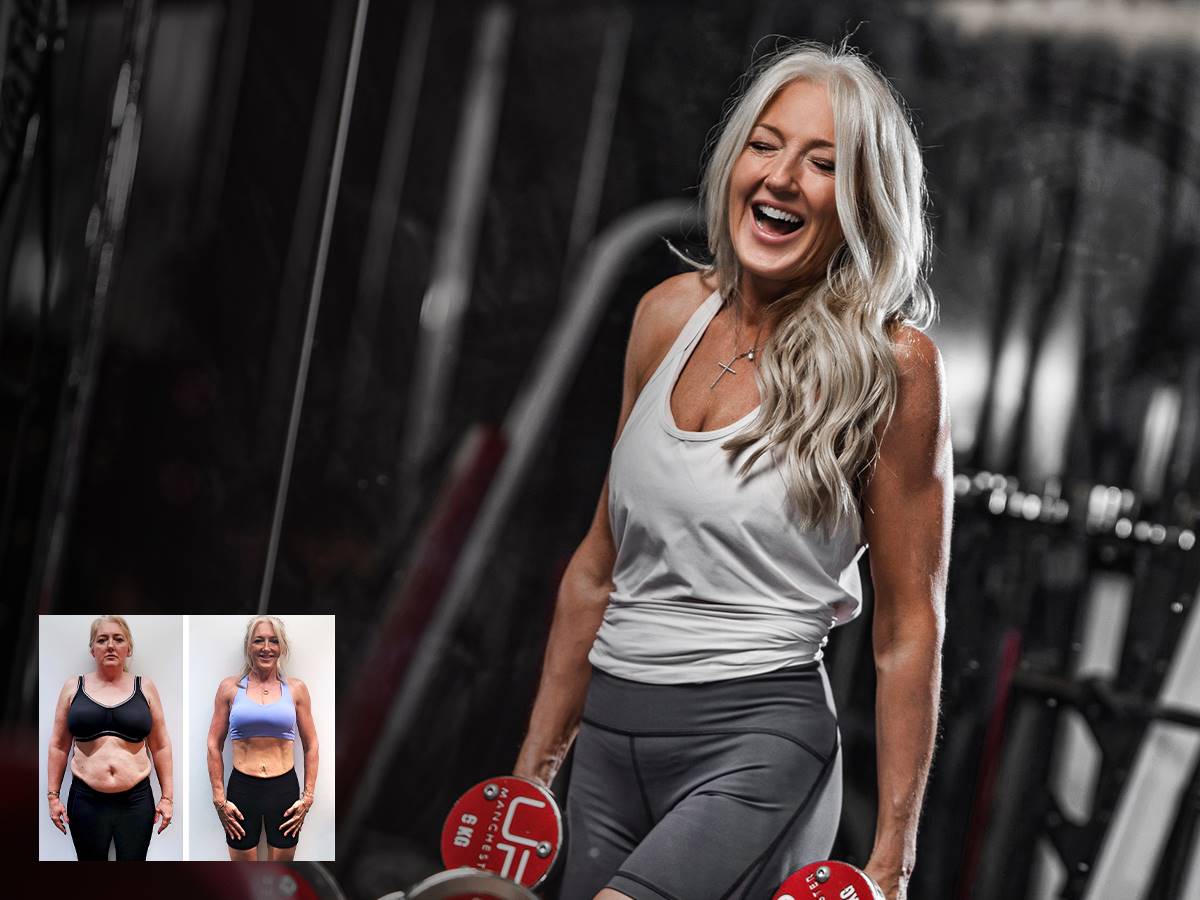
A good personal trainer can create a proper periodised program that’s suited to your ability and lifestage. Read how Susan transformed her health at 51 with 3 workouts a week.
Rule 7: Focus on quality over quantity
More exercises, more sets, more volume – these don’t always lead to better results. Especially over 40, where time, energy and recovery capacity are often limited, training should focus on quality. That means selecting the right movements, performing them with precision, and getting the most out of every set.
Most clients in this age group progress faster when sessions are simplified and focused. Four to five well-executed exercises per session is often enough – especially when each one targets a key movement pattern and is taken close to technical failure. Upper–lower splits, push–pull formats or full-body training done with intent will outperform bloated, overcomplicated workouts every time.
The goal isn’t to do more – it’s to do better. Fewer exercises done well consistently beats throwing everything at the wall. Progress comes from repeated exposure to high-quality work – not novelty or exhaustion.
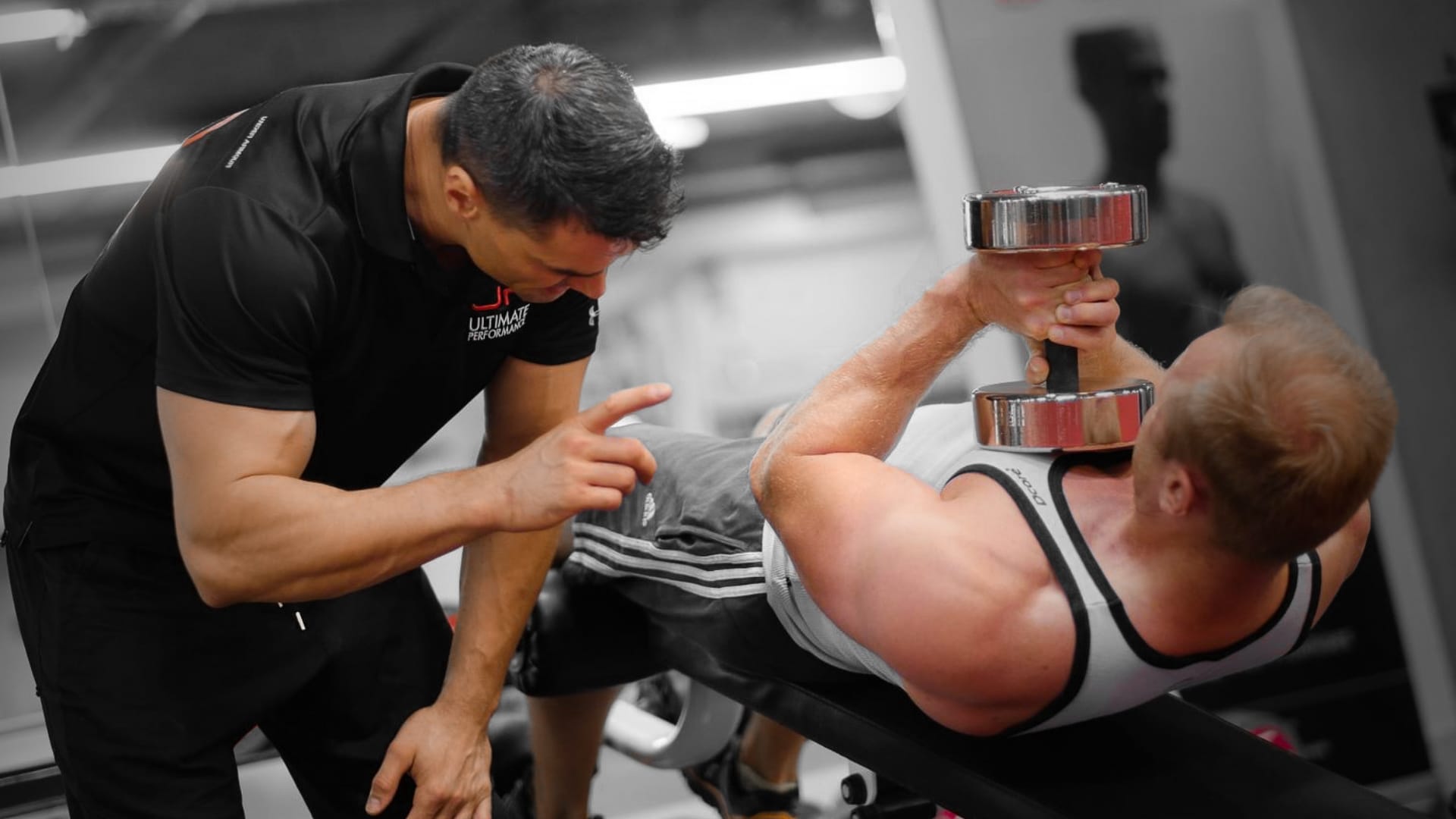
Fewer targeted exercises done well will always beat bloated, random workouts.
Rule 8: Warm up, mobilise and stay flexible
Warm-ups over 40 (and indeed any age) should be targeted – not time-consuming. In a personal training session, every minute counts. That’s why we use warm-ups to prepare the muscles and joints for the exact movement patterns ahead, rather than wasting time on generic stretching or lengthy foam rolling routines.
A smart warm-up takes each muscle group through its full range of motion, activates key stabilisers and gradually ramps up to the working weight. This improves movement quality, reduces injury risk and ensures you get the most from every set. It’s specific, efficient and immediately effective.
Longer-term mobility – the kind that improves posture, joint health and movement mechanics – comes from what you do outside the gym. Short daily sessions focused on hips, shoulders and thoracic spine can transform how you move and lift over time. Treat mobility like brushing your teeth – a daily habit that protects long-term health and performance.
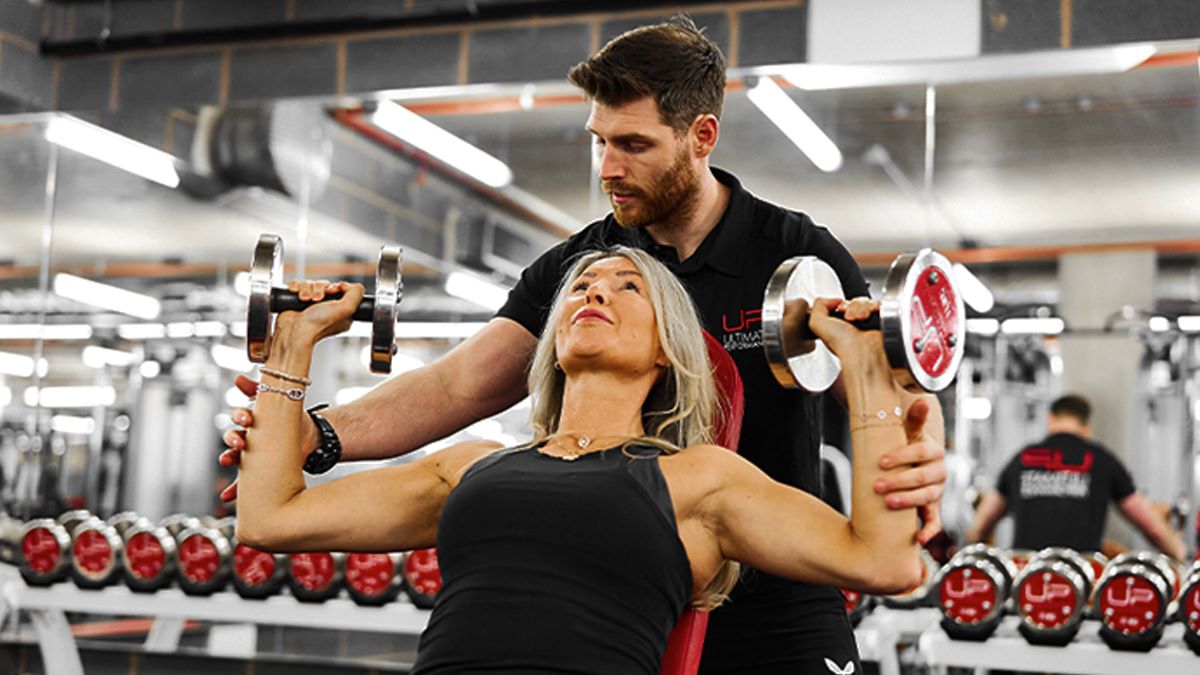
If you want to stay strong and mobile as you age, you need to work at it consistently.
Rule 9: Use conditioning to improve work capacity
Strength training should form the backbone of any over-40 program – but conditioning still matters. As cardiovascular fitness declines with age, staying fit becomes essential not just for health and longevity, but also for improving recovery and performance in the gym.
Better work capacity allows you to train harder, recover faster between sets and tolerate more productive volume across the week. That doesn’t mean endless cardio – it means using short, intense bursts of effort or integrating conditioning into your resistance training.
For some, that’s adding a conditioning finisher at the end of a session. For others, it might mean structured sessions focused on interval work, sled pushes or circuit-style training. Either way, conditioning is a powerful tool – not just for heart health and fat loss, but for keeping your training sharp, sustainable and progressing year after year.
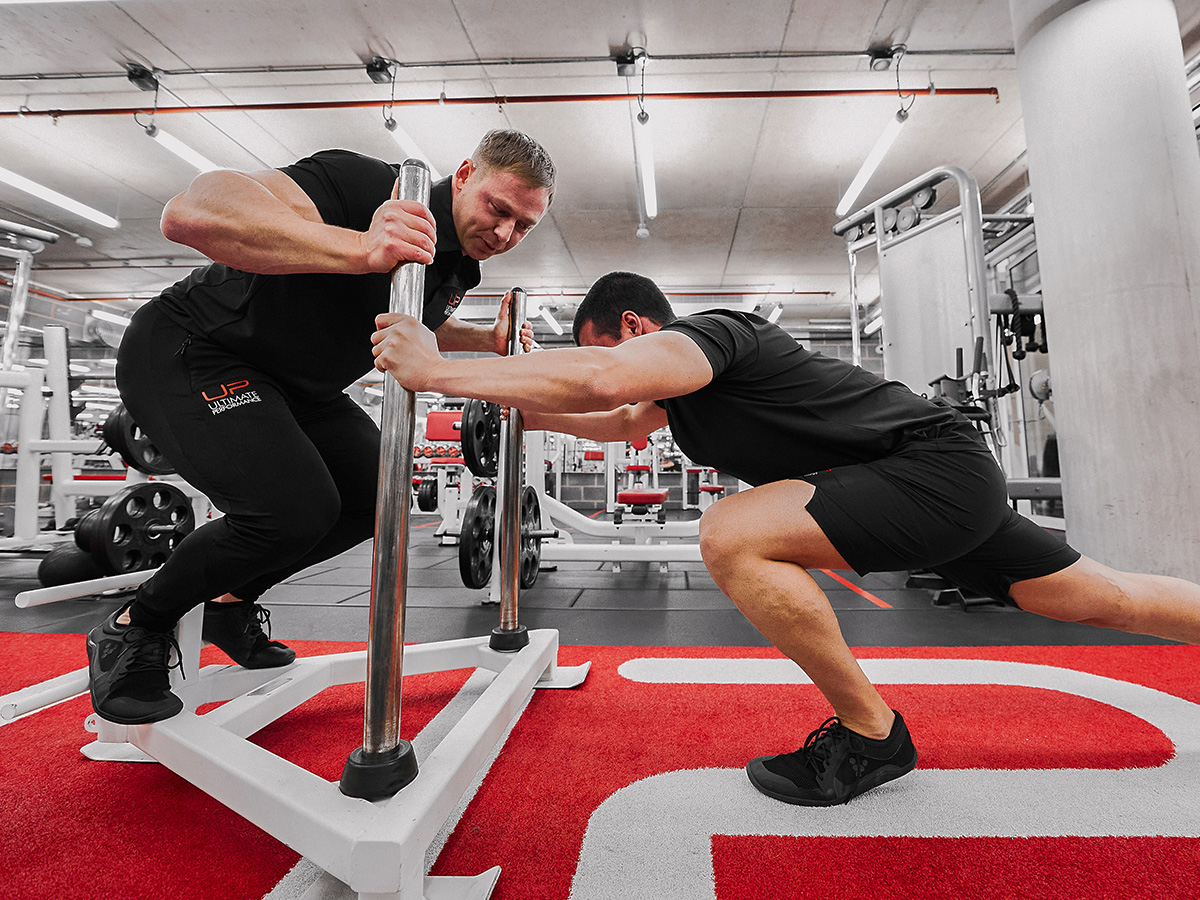
Conditioning boosts recovery, fat loss and performance – not just cardio fitness.
Rule 10: Stay active and enjoy the process
Training three or four times a week is powerful – but what you do outside the gym still matters. Daily movement supports recovery, reduces inflammation, improves insulin sensitivity and helps combat the natural decline in energy and mobility that often comes with age. Many of our clients will target 10,000 steps per day to increase their NEAT (non-exercise activity thermogenesis) which helps accelerate fat loss.
A short walk after meals, taking the stairs, playing a sport, stretching in the evening – these habits all add up. One of the simplest ways to improve body composition over 40 is to stay consistently active between sessions. Movement drives blood flow, regulates appetite, supports mood and sharpens mental focus.
And just as importantly – find forms of movement you enjoy. Whether that’s hiking, swimming, rucking or playing five-a-side, long-term success comes from building a lifestyle around physical activity, not just ticking off workouts. The gym is the anchor – but staying strong, lean and healthy depends on what you do the rest of the week.

Plenty of daily movement outside the gym matters just as much as what you do inside it.
How to train through menopause and andropause
Hormonal changes can have a significant impact on how your body responds to training in your 40s, 50s and beyond. For women, the transition through menopause brings shifts in oestrogen and progesterone. For men, andropause is marked by a gradual decline in testosterone. Both affect recovery, fat storage, muscle retention, sleep and stress resilience – which means training needs to adapt.
Training through menopause
Menopause is associated with a drop in oestrogen and progesterone – two hormones that influence everything from mood and sleep to fat storage and insulin sensitivity. These changes can make it harder to recover, easier to gain weight and more difficult to regulate energy and stress.
Resistance training is one of the most effective tools to counteract this. It supports lean mass, bone density and metabolic rate – and helps reduce visceral fat around the abdomen. But intensity must be carefully managed. Many women going through menopause respond better to shorter, more focused sessions that balance challenge with recovery. A mix of strength training, low-impact cardio, mobility work and restorative activities like walking or yoga can support both physical results and nervous system regulation.
It’s not about backing off from hard training, but about being smarter and more strategic. Proper nutrition, high protein intake and consistent resistance training can dramatically reduce symptoms of menopause and support long-term health through this transition.

Hormonal changes aren’t a barrier to training – they’re a reason to start. Read how weight training transformed Alison’s health post-menopause as she approached 60.
Training through andropause
From the late 30s onwards, testosterone levels in men begin a slow, natural decline – affecting muscle mass, strength, motivation, fat distribution and overall recovery. For men going through this period of life which is often called ‘andropause’, the key is to use resistance training to amplify the body’s natural anabolic response.
Higher-volume training with moderate-to-heavy loads, short rest periods and big compound lifts like squats, rows and presses tend to produce the best hormonal response. But this must be balanced with adequate rest, sleep, and recovery-focused nutrition – especially protein.
Testosterone may decline with age – but consistent strength training can preserve muscle mass, support healthy body composition and help maintain energy and confidence well into later life.
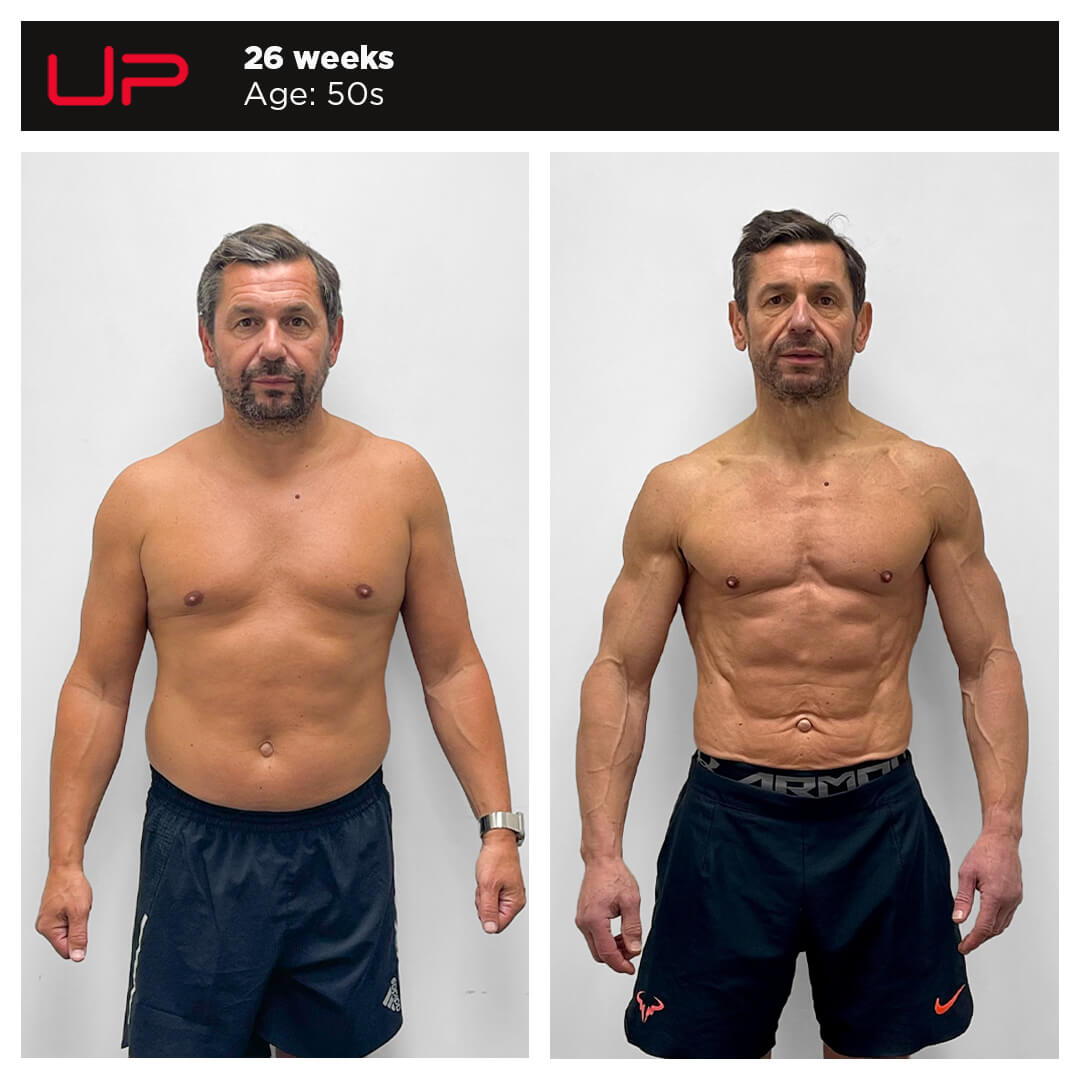
You can continue to build muscle long after your 40s. Read how John turned himself into a ‘supreme athlete’ at 55 with Ultimate Performance.
Real client results: What’s possible over 40
Thousands of Ultimate Performance clients over 40 have proven that age is no barrier to building muscle, losing fat and transforming your body. With the right plan, expert coaching and a consistent approach, results can often come faster than people expect.
Take 57-year-old Roy, a father of three who lost a life-changing 40kg (88lbs) alongside his partner. After years of unhealthy habits, his blood pressure was rising, his confidence had dropped, and he was suffering from arthritis that stopped him playing football. Strength training three times a week, daily steps, and a simple, high-protein nutrition plan helped him turn it all around. Roy’s transformation didn’t just help him lose weight – he reduced his blood pressure to healthy levels, eased his arthritis to be able to play football again, and has the energy to play with his kids again.
He’s not the exception. Across our estate of private personal training gyms worldwide, countless clients aged 40–80+ have achieved measurable results. The methods in this article aren’t theory – they’re the foundations we use every day in the gym to deliver results with real people, in the real world.
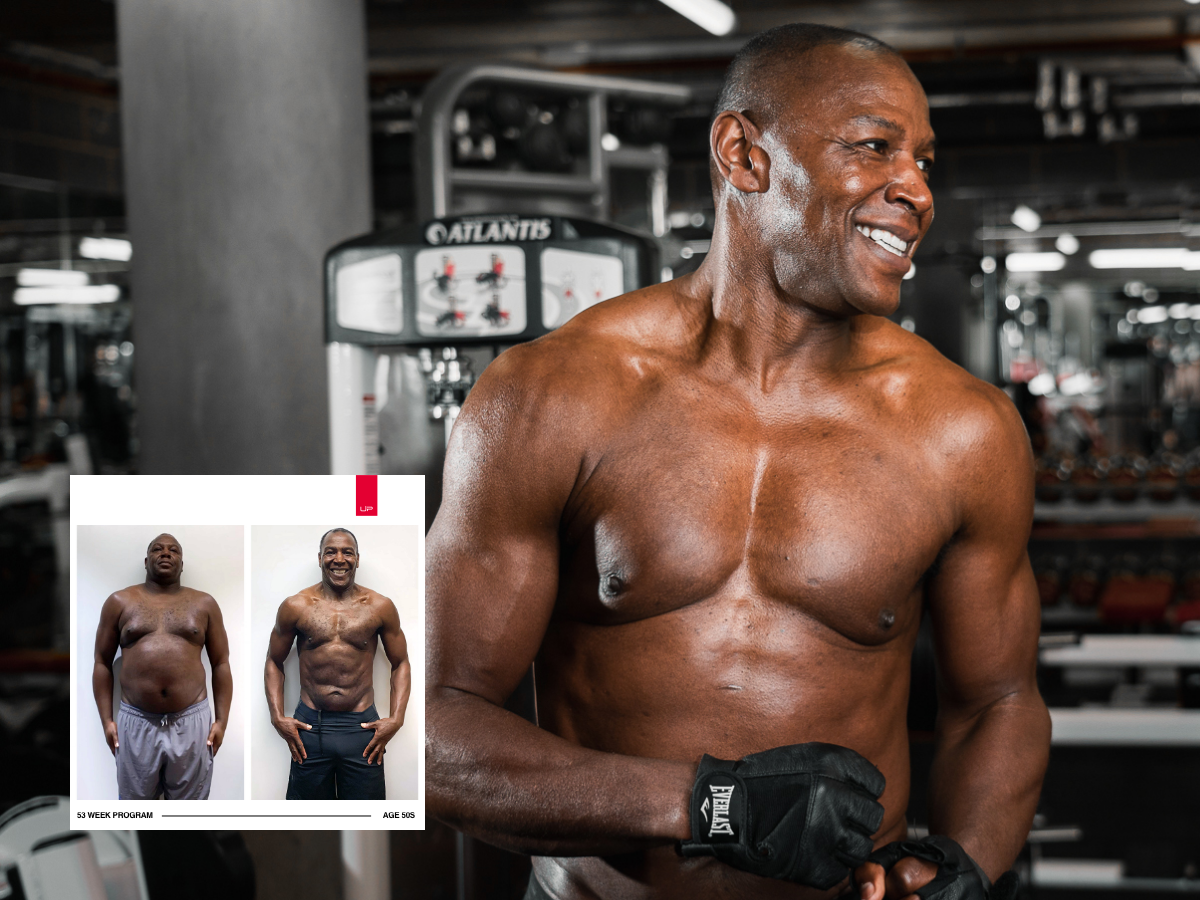
Read how Roy achieved his 40kg (88lbs) transformation or explore more client results.
FAQ: Your top questions about weight training over 40
How much protein do I need to build muscle over 40?
Most people over 40 need between 1.6–2.2 grams of protein per kilogram of bodyweight per day to optimise muscle growth and recovery [1]. If you’re in a calorie deficit or training hard multiple times per week, aim for the higher end of that range. Spread intake across three to four meals for best effect.
Will lifting weights make me bulky?
No. Building large amounts of muscle takes years of focused effort, high training volume, surplus calories and often genetic advantage. What weight training will do is help you lose fat, improve muscle tone, and reshape your body – not turn you into a bodybuilder.
Can I still build muscle in my 40s and 50s?
Yes – provided you train consistently and fuel your body correctly. Studies show that adults in their 40s, 50s and beyond can still build significant lean mass with structured resistance training and adequate protein intake [2]. It might take slightly longer to recover between sessions, but the results are just as powerful.
Do I need to use protein shakes?
Protein shakes are convenient – not essential. If you struggle to hit your daily protein target with whole foods, shakes can help close the gap. But if you’re getting enough protein through meals, you don’t need to rely on supplements.
Is weight training safe for my joints?
Yes – when done correctly, it protects your joints. Strength training improves joint stability, builds supporting muscle and reinforces good movement patterns. Poor technique, excessive loading or skipping warm-ups are what lead to problems – not lifting itself.
Conclusion
The rules don’t change when you turn 40 – but the margin for error gets smaller. You can still train hard, get strong, build muscle and improve your body composition. But you need to train with purpose, precision and consistency.
These 10 principles form the blueprint we use with thousands of clients across the globe at Ultimate Performance to help them get in the best shape of their lives – not despite their age, but because they’ve committed to doing things properly. When you follow a smart plan, results aren’t just possible – they’re inevitable.
References
- Morton, R. W., Murphy, K. T., McKellar, S. R., Schoenfeld, B. J., Henselmans, M., Helms, E., Aragaon, A., Devries, M., Banfield, L., Krieger, J., & Phillips, S. M. (2018). A systematic review, meta-analysis and meta-regression of the effect of protein supplementation on resistance training-induced gains in muscle mass and strength in healthy adults. British Journal of Sports Medicine, 52(6), 376–384. PMID: 28698222. (https://pubmed.ncbi.nlm.nih.gov/28698222/)
- Reidy, P. T., & Rasmussen, B. B. (2016). Role of Ingested Amino Acids and Protein in the Promotion of Resistance Exercise–Induced Muscle Protein Anabolism. The Journal of Nutrition, 146(2), 155–183. PMID: 26781808. (https://pmc.ncbi.nlm.nih.gov/articles/PMC4725426/)
- Mitchell, W. K., Williams, J., Atherton, P., Larvin, M., Lund, J., & Narici, M. (2012). Sarcopenia, dynapenia, and the impact of advancing age on human skeletal muscle size and strength; a quantitative review. Frontiers in Physiology, 3, 260. PMID: 22934016. (https://pubmed.ncbi.nlm.nih.gov/22934016/)
- Watson, S. L., Weeks, B. K., Weis, L. J., Harding, A. T., Horan, S. A., & Beck, B. R. (2018). High-intensity resistance and impact training improves bone mineral density and physical function in postmenopausal women with osteopenia and osteoporosis: the LIFTMOR randomized controlled trial. Journal of Bone and Mineral Research, 33(2), 211–220. PMID: 30507623. (https://pubmed.ncbi.nlm.nih.gov/30861219/)
- Hansen, M., & Kjaer, M. (2014). Sex hormones and exercise. In Comprehensive Physiology, 4(1), 1307–1340. PMID: 24692142. (https://pubmed.ncbi.nlm.nih.gov/25062001/)
- Ahtiainen, J. P., Walker, S., Peltonen, H., Holviala, J., Sillanpää, E., Karavirta, L., Sallinen, S., Mikkola, J., Valkeined H., Mero, A., Hulmi, J., & Häkkinen, K. (2010). Heterogeneity in resistance training-induced muscle strength and mass responses in men and women of different ages. Age, 32(1), 83–97. PMID: 21131862. (https://pubmed.ncbi.nlm.nih.gov/26767377/)
The post 10 Golden Rules to Weight Training for Over 40s appeared first on Ultimate Performance Blog.
Source link


